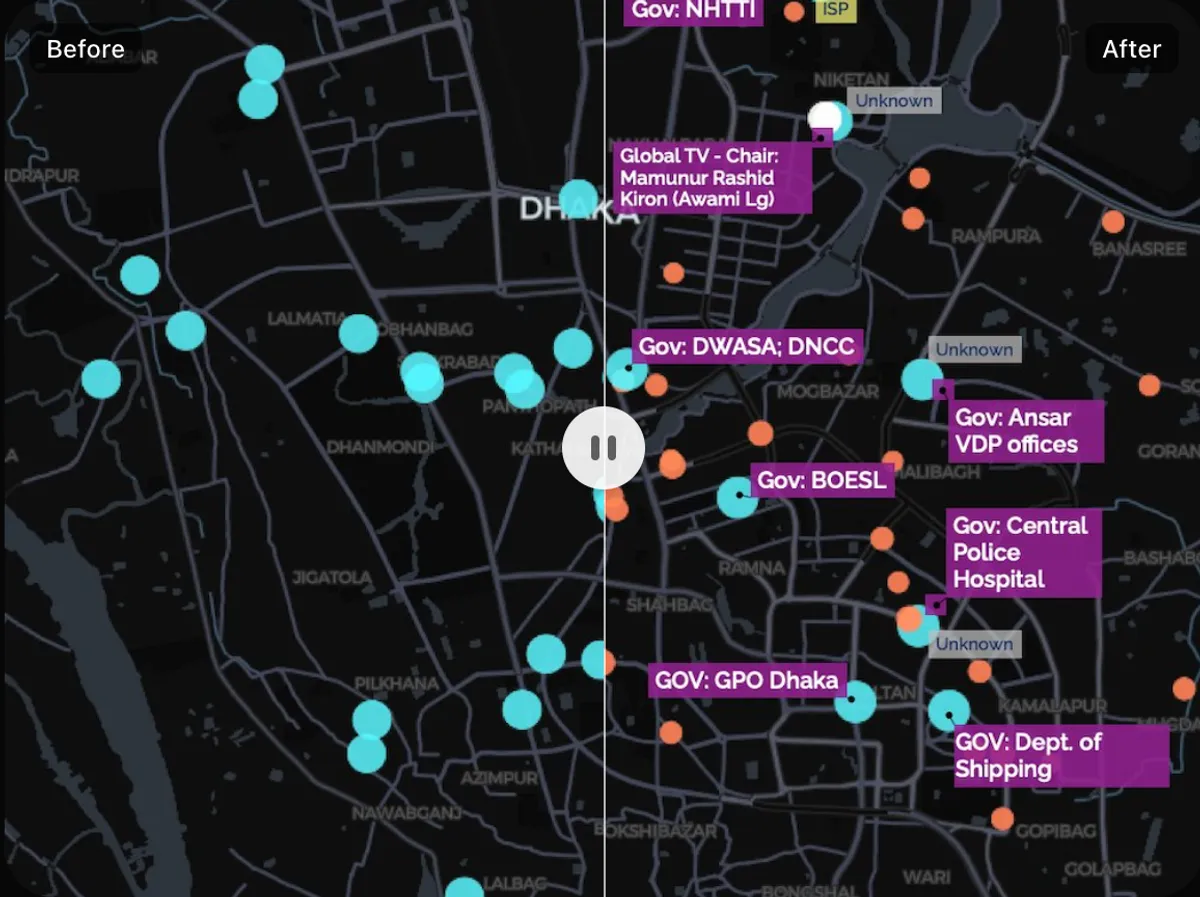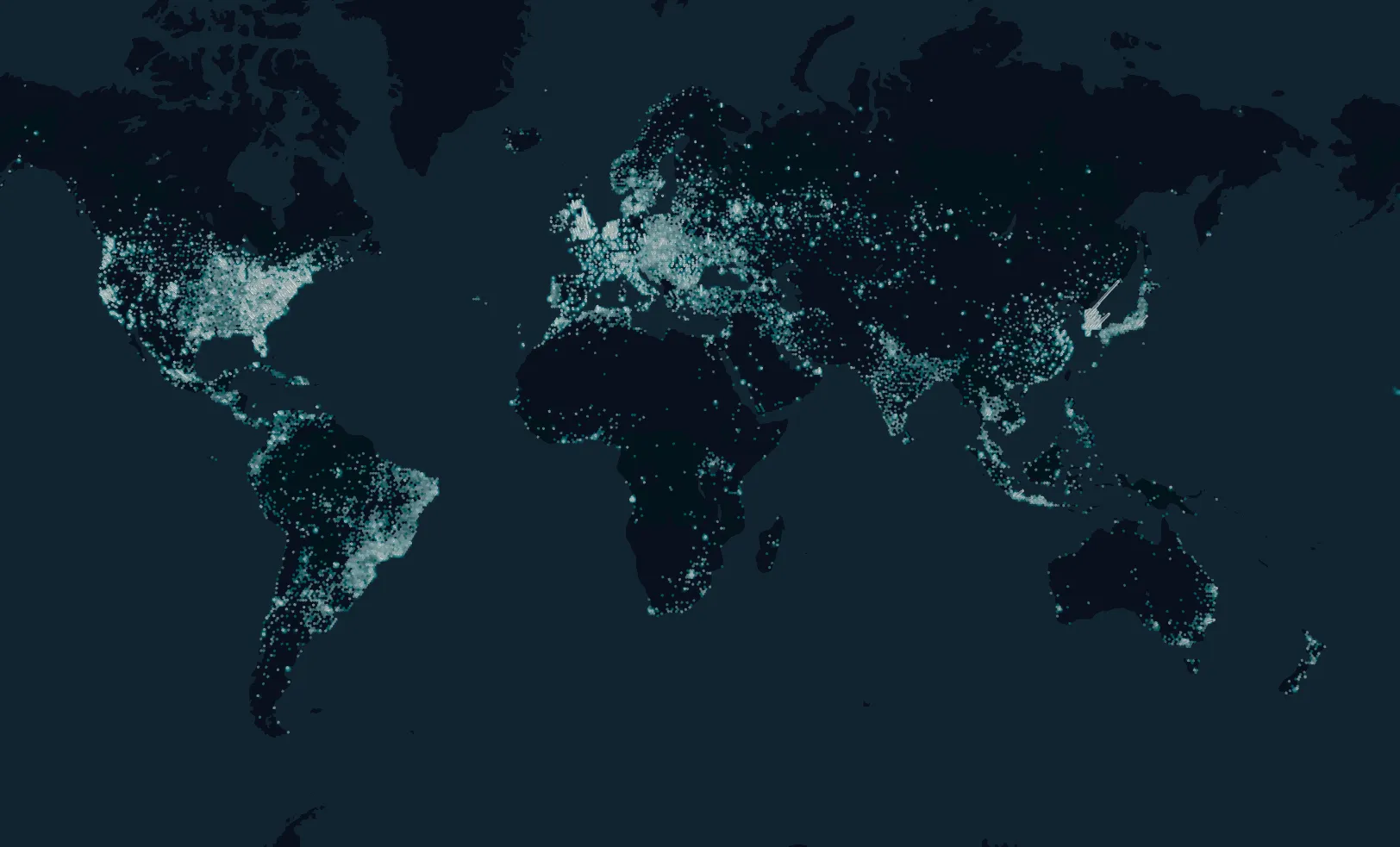Monitoring the Bangladesh Internet Shutdowns: How KASPR Revealed Hidden Patterns in Government Connectivity
Background: From Student Protests to Nationwide Blackout
In July 2024, Bangladesh was rocked by massive student protests demanding the abolition of a long-standing government job quota system that reserved up to 30% of positions for families of veterans of the 1971 war of independence. Protesters argued that the system unfairly favored supporters of Prime Minister Sheikh Hasina’s ruling Awami League, calling instead for a merit-based approach.
As demonstrations spread across the country, the government responded with violence, mass arrests, and an unprecedented internet shutdown that left nearly 170 million people offline for almost a week.
According to ABC News (July 24 2024), at least 174 people were reported dead, over 2,500 were arrested, and connectivity dropped to just 2 percent of normal levels.
“There are no signs in the data we have that the internet has been, or will be, online soon.”
— Prof. Simon Angus, Monash IP Observatory, speaking to ABC News
Tracking the Digital Blackout
Using the KASPR Datahaus infrastructure, we were able to monitor the collapse and gradual restoration of Bangladesh’s internet in real time. Our data, based on billions of daily latency and connectivity measurements across millions of IP endpoints, captured multiple phases of the disruption.
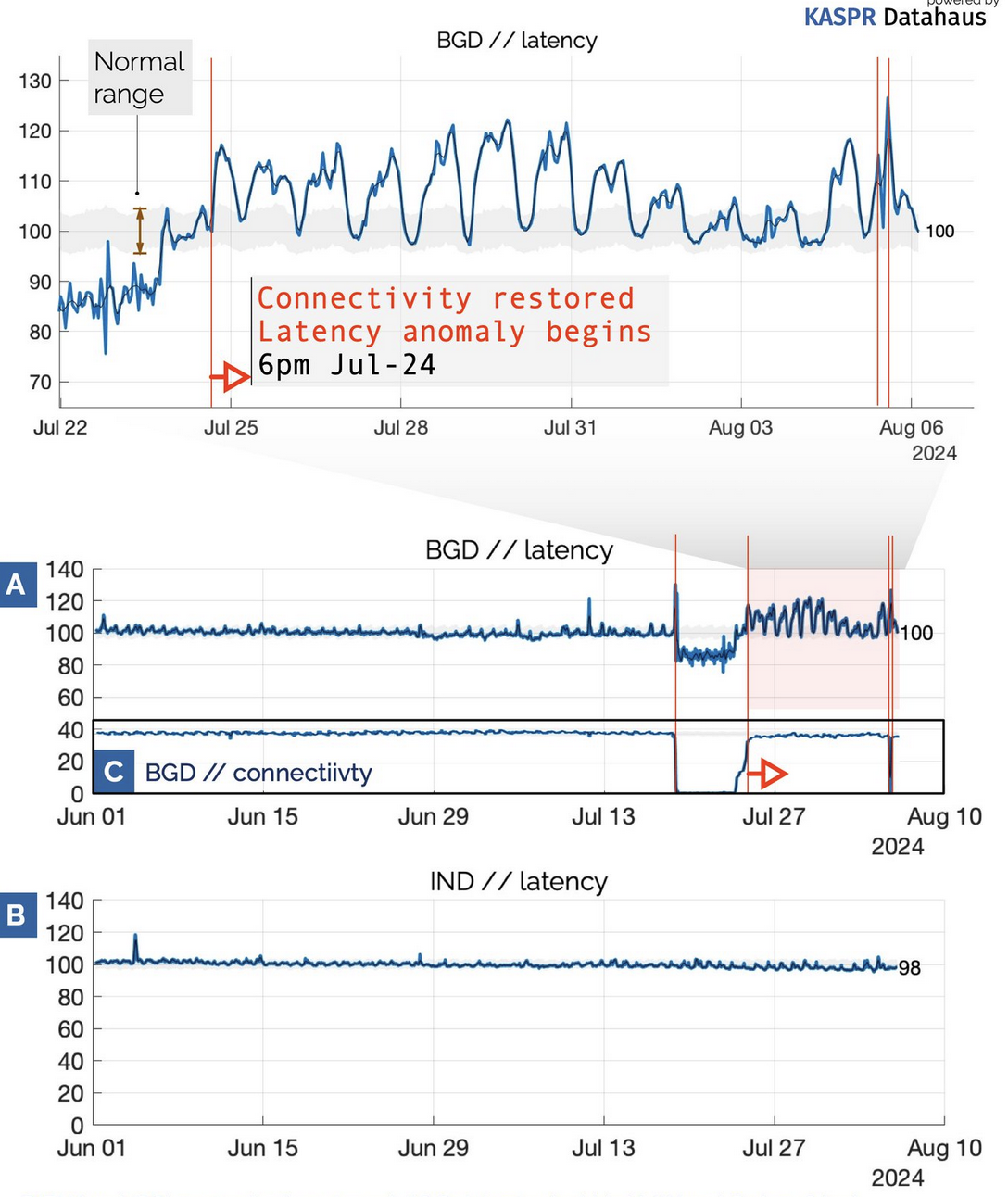
The first major shutdown began around 8 pm July 18, bringing connectivity close to zero across the country. Partial restoration occurred five days later on July 23, followed by near-full recovery on July 24. However, the data revealed that this restoration was uneven—while most networks returned online, government-owned and institutional IP ranges remained largely unaffected throughout.
Spatial Patterns: Who Stayed Online
Mapping KASPR’s endpoint data across Dhaka showed that, while private networks went dark, government agencies, police, and state media offices retained internet access.

On July 15, prior to the blackout, the map showed normal connectivity across the capital. By July 20, after the shutdown began, most civilian and ISP-linked nodes (orange) went offline—yet clusters of operational endpoints (blue) persisted within government zones.
KASPR’s real-time network classification identified active nodes associated with the Department of Shipping, the Dhaka North City Corporation (DNCC), the Central Police Hospital, and several ministries and military facilities.
These patterns align with reports that the government had ordered a targeted suspension of public networks while maintaining secure internal channels for administrative and security coordination.
Timeline of Shutdowns and Restorations
The following timeline synthesizes the series of connectivity and latency anomalies detected by KASPR Datahaus:
1️⃣ July 18 – 24 2024: Nationwide Shutdown
- Start: 8 pm July 18
- Partial restoration: 8 pm July 23
- Near-full restoration: 5 pm July 24

During this period, connectivity dropped to under 5% of normal. Latency readings became unstable once partial service returned, indicating severe routing congestion and bandwidth throttling.
2️⃣ July 24 – August 5 2024: Slow-Latency Period
After reconnection, Bangladesh entered a prolonged phase of high latency. KASPR’s measurements show a daily oscillation pattern suggesting partial network normalization but ongoing throttling and filtering.
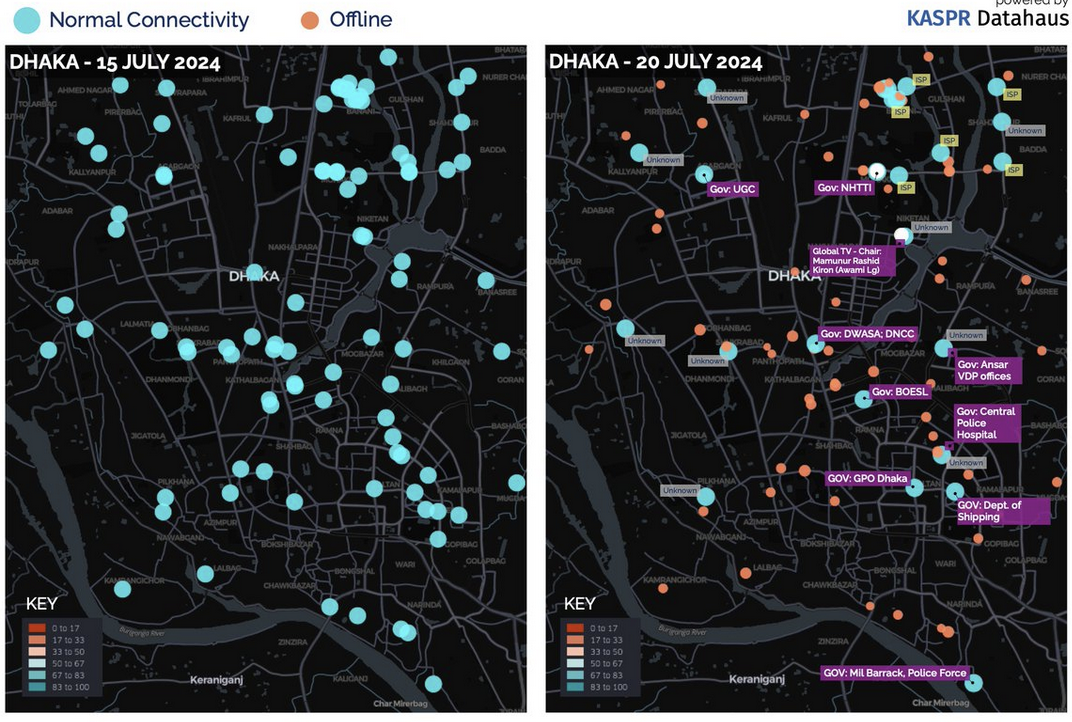
Connectivity data (Panel B) stabilized, but latency (Panel C) remained elevated by 15–25% above baseline for nearly two weeks.
3️⃣ August 5 2024: Second Short-Term Shutdown
A second, brief outage occurred on August 5, lasting roughly four hours (10 am – 2 pm).
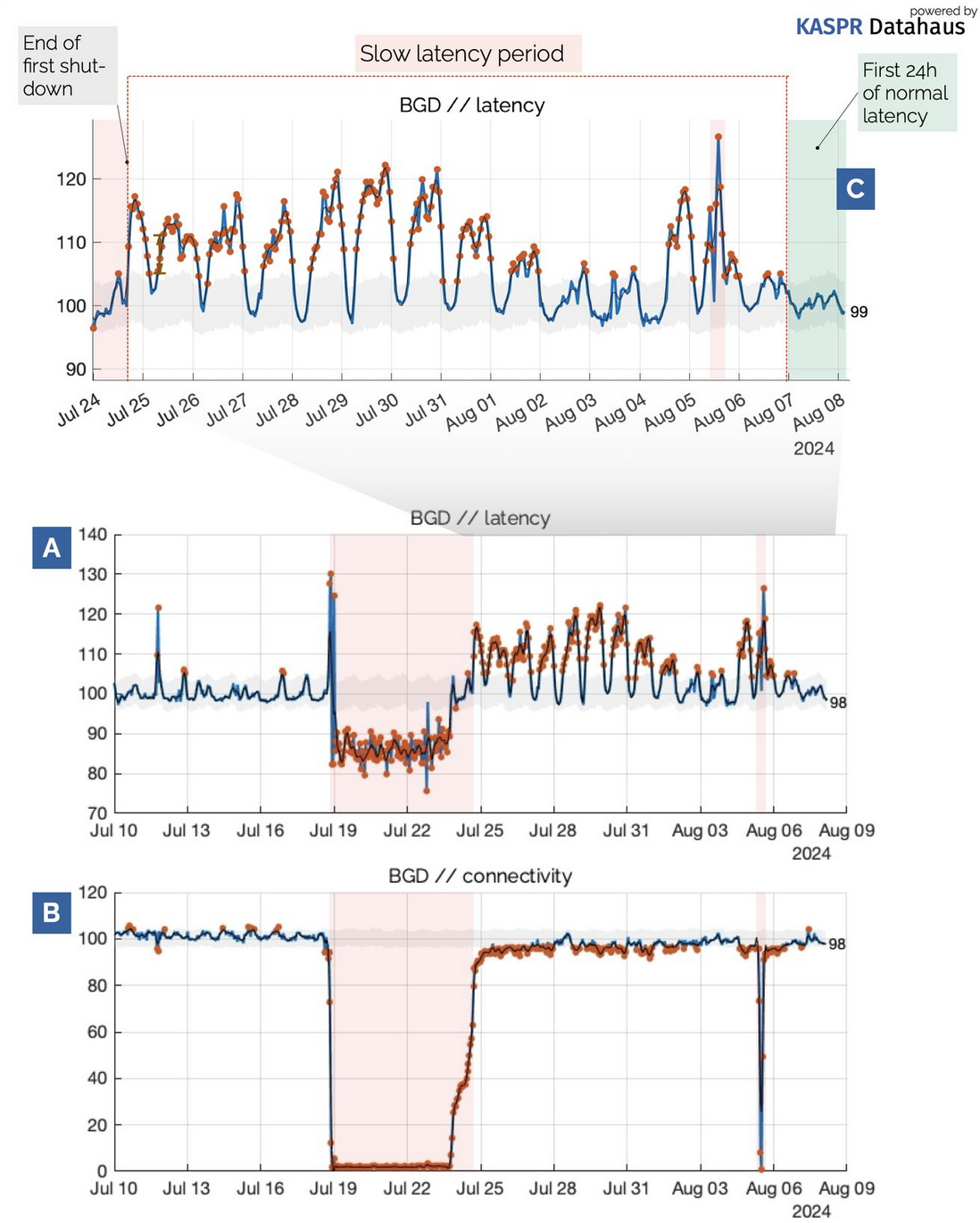
This event mirrored the earlier pattern but was more localized and shorter, possibly a controlled network reset or selective blocking during renewed demonstrations.
Differential Latency Analysis: Identifying Structural Resilience
KASPR’s differential analytics allowed us to distinguish between systemic and localized disruptions. By comparing the Bangladeshi (BGD) latency signal with neighboring India (IND), we confirmed that the anomaly was entirely domestic—not regional congestion or transnational routing issues.
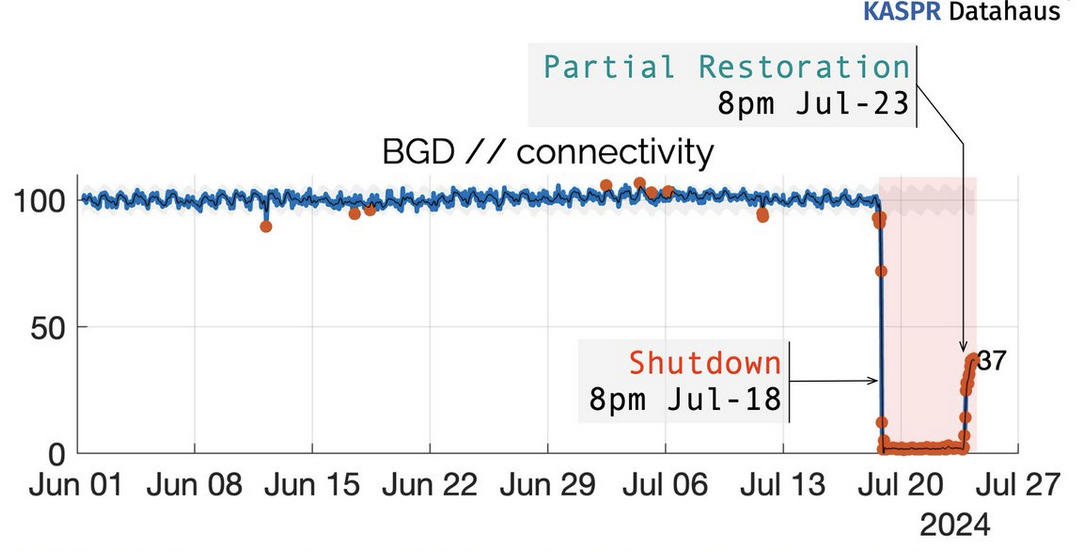
Moreover, our cross-network comparison between government and commercial IP blocks revealed a split in the digital experience: while public networks suffered near-total collapse, state-owned infrastructure continued operating, implying selective connectivity preservation for official and security purposes.
The Broader Implications
The Bangladesh case demonstrates how KASPR Datahaus and the Monash IP Observatory provide critical visibility into state-level internet interventions—even when information flows are suppressed.
- High-frequency, geo-located measurements enable real-time tracking of internet integrity across entire nations.
- Differential analysis isolates which network segments are affected, exposing targeted shutdowns versus technical failures.
- Mapping overlays reveal institutional resilience—helping journalists, civi

